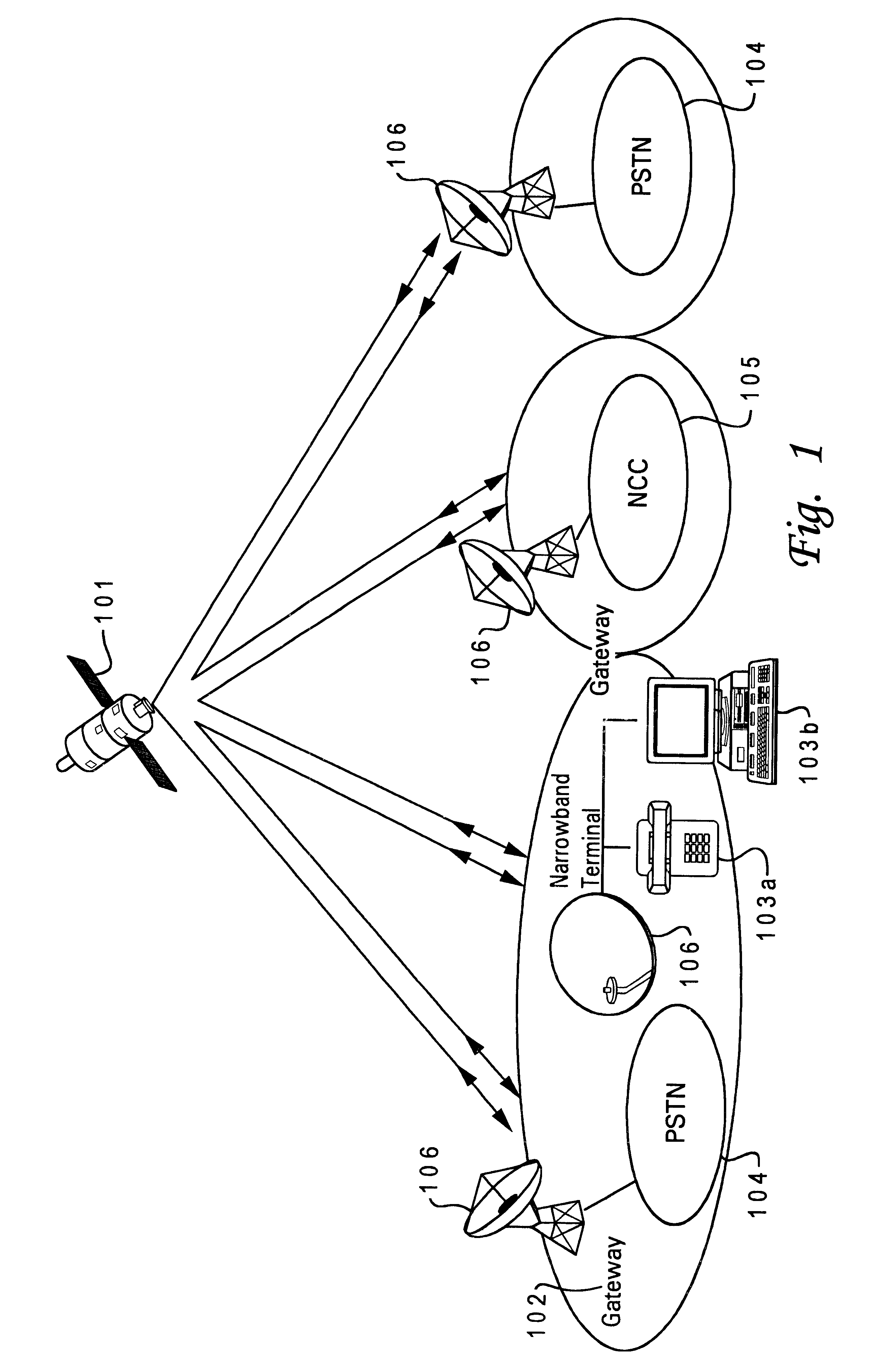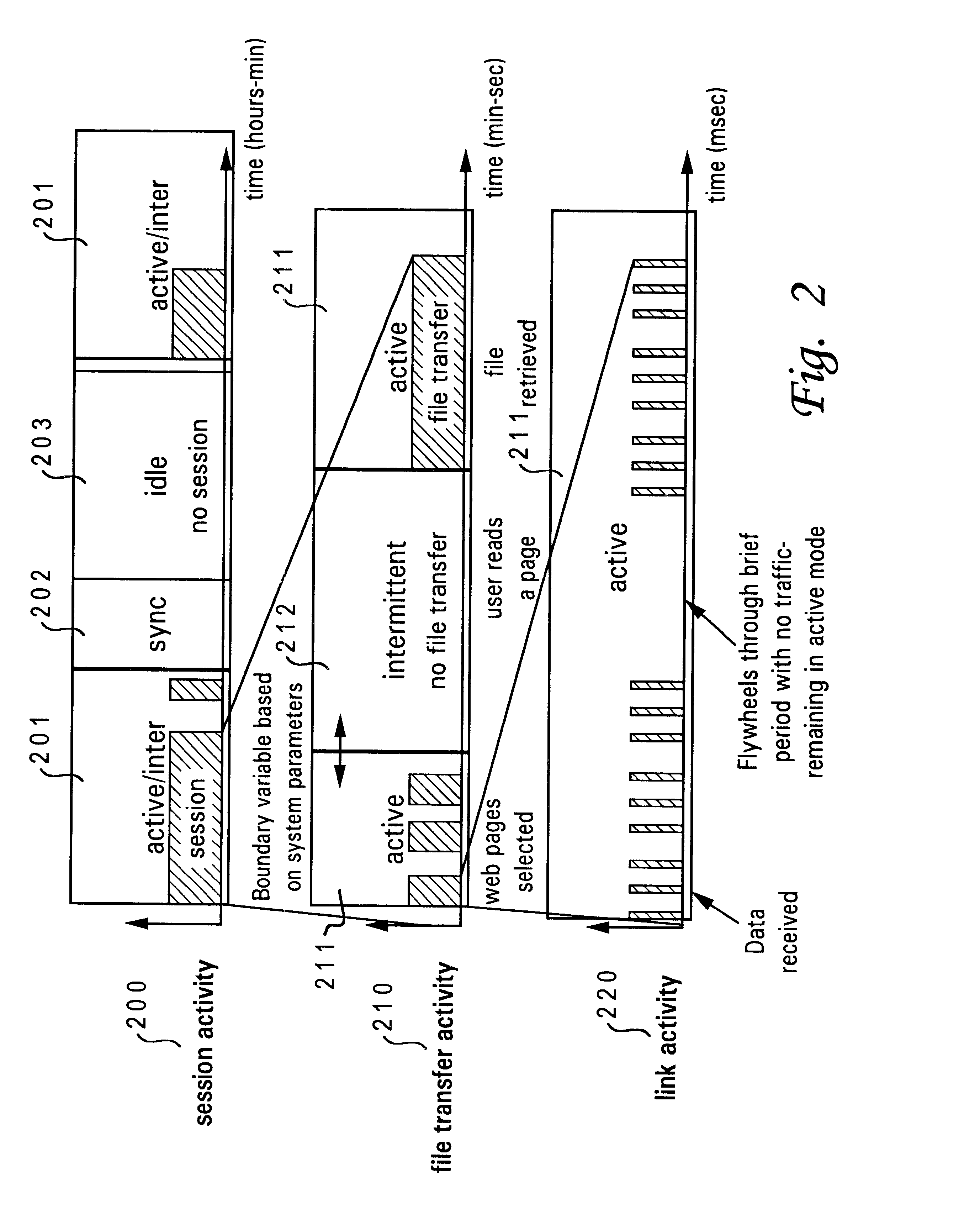Activity based resource assignment medium access control protocol
a resource assignment and access control technology, applied in the field of satellite communications system, can solve the problems of long access delay, high cost, and high cost of satellite communications, and achieve the effect of reducing the cost of satellite communications
- Summary
- Abstract
- Description
- Claims
- Application Information
AI Technical Summary
Benefits of technology
Problems solved by technology
Method used
Image
Examples
Embodiment Construction
The invention is a resource assignment MAC layer protocol for broadband interactive satellite communications system. The preferred embodiment of the invention is specifically designed for a geostationary satellite system. The invention provides a new and efficient resource assignment scheme that enables a large number of low duty cycle interactive satellite terminals to share a pool of satellite transmission resources efficiently. By exploiting the traffic characteristic of individual interactive satellite terminal users which typically consists of burst of high activities followed by longer periods of no activities the invention improves overall efficiency of the system while maintaining low access and reduced traffic delays.
With reference now to the figures and in particular with reference to FIG. 1, there is depicted a satellite communication system in which the present invention may be implemented including a satellite 101 orbiting above the Earth's surface. The satellite commun...
PUM
 Login to View More
Login to View More Abstract
Description
Claims
Application Information
 Login to View More
Login to View More - R&D
- Intellectual Property
- Life Sciences
- Materials
- Tech Scout
- Unparalleled Data Quality
- Higher Quality Content
- 60% Fewer Hallucinations
Browse by: Latest US Patents, China's latest patents, Technical Efficacy Thesaurus, Application Domain, Technology Topic, Popular Technical Reports.
© 2025 PatSnap. All rights reserved.Legal|Privacy policy|Modern Slavery Act Transparency Statement|Sitemap|About US| Contact US: help@patsnap.com



